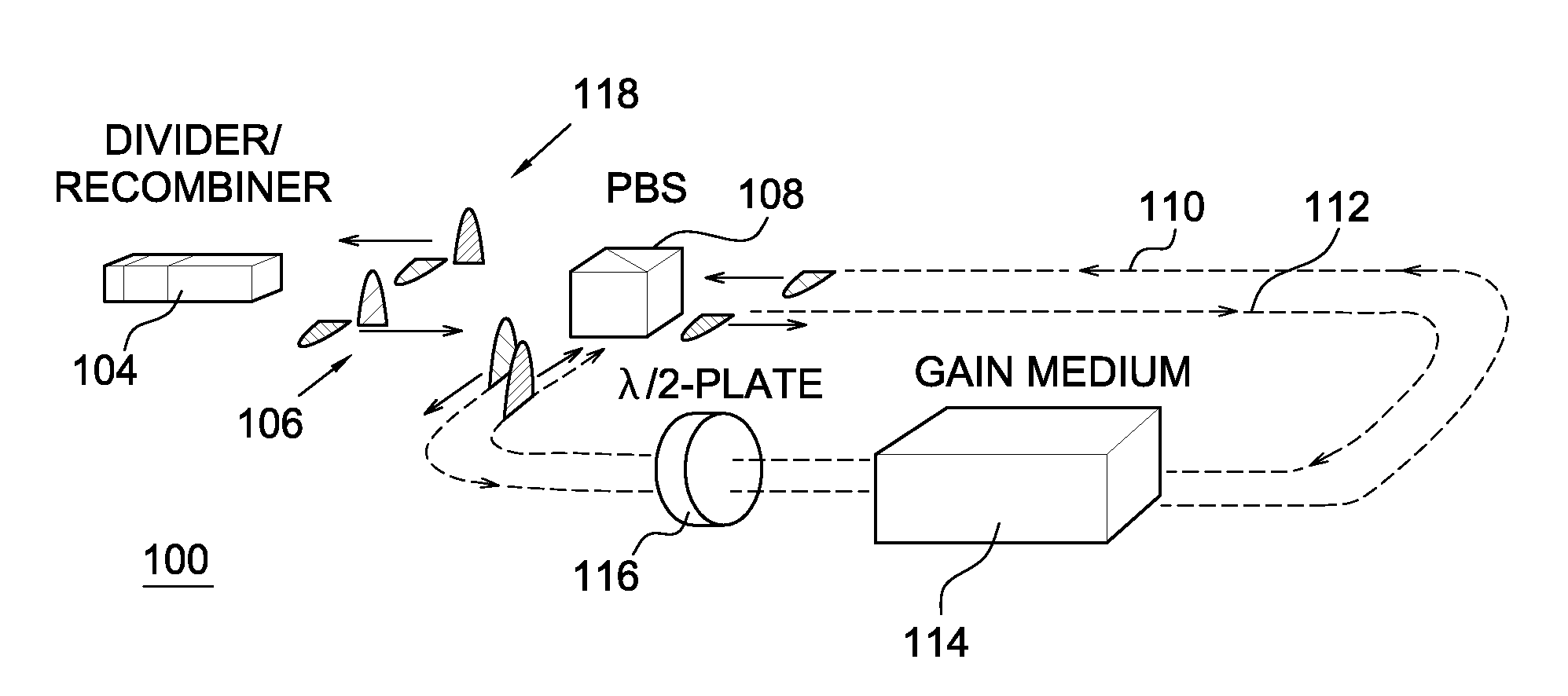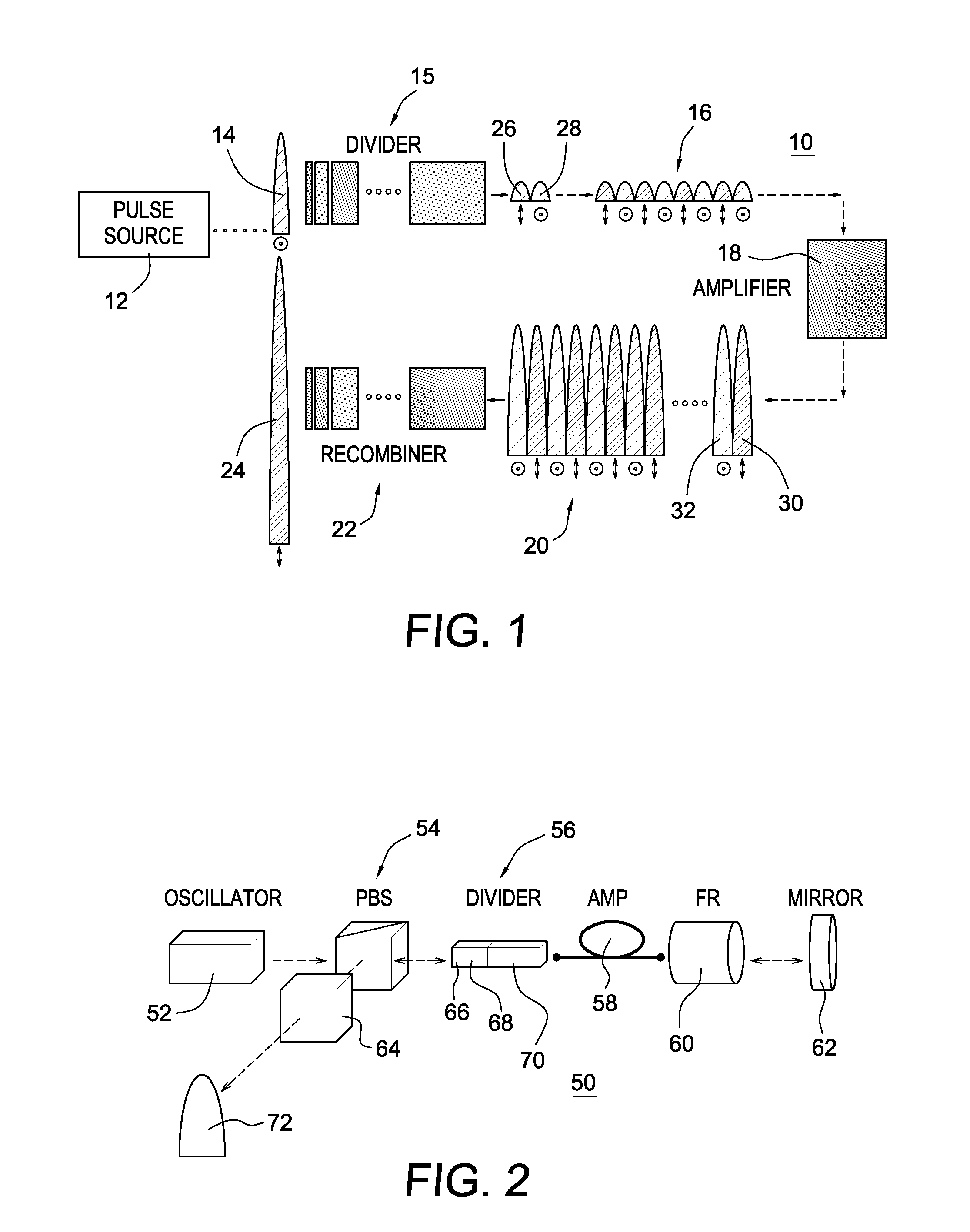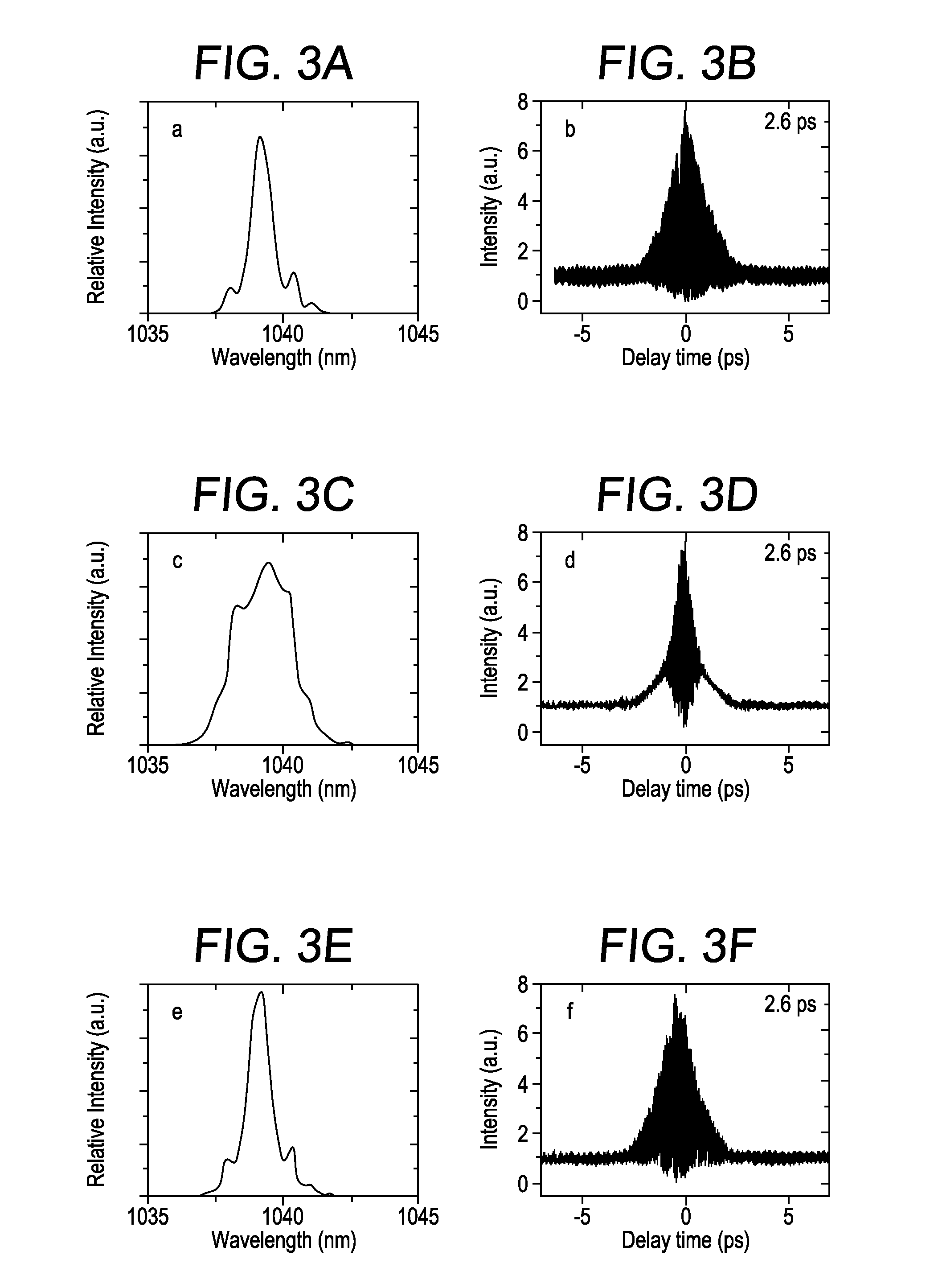Divided-pulse amplification of short pulses
a technology of amplification and short pulses, applied in the field of short pulse amplification techniques, can solve the problems of affecting the amplification effect of chirped pulses, affecting the amplification effect of short pulses, and reaching the limit of chirped pulse amplification, so as to improve the amplification effect, and reduce the magnitude and energy
- Summary
- Abstract
- Description
- Claims
- Application Information
AI Technical Summary
Benefits of technology
Problems solved by technology
Method used
Image
Examples
Embodiment Construction
[0019]FIG. 1 is a schematic illustration of a pulse amplifier 10 that is designed to operate in accordance with the DPA principle of the present invention. A pulse source 12, such as a laser oscillator, generates a pulse 14 to be amplified. The pulse 14 is first fed though a pulse divider 15 which divides the original pulse 14 into N smaller copies of itself. N is dependent on the number of divider stages M, where N=2M. The N pulses form a sequence of pulses 16 which is amplified in one or more amplifier stages 18 having a gain G. Finally, the N amplified pulses 20 are passed through a recombiner 22 which combines the amplified pulses 20 to form one large amplified pulse 24. The pulse 24 is a version of the original pulse 14 that has been amplified by the factor G.
[0020]An essential component of DPA is the process of pulse division and recombination. It is known, theoretically that a pulse can be split and then recombined in a birefringent crystal. One embodiment of the present inve...
PUM
 Login to View More
Login to View More Abstract
Description
Claims
Application Information
 Login to View More
Login to View More - R&D
- Intellectual Property
- Life Sciences
- Materials
- Tech Scout
- Unparalleled Data Quality
- Higher Quality Content
- 60% Fewer Hallucinations
Browse by: Latest US Patents, China's latest patents, Technical Efficacy Thesaurus, Application Domain, Technology Topic, Popular Technical Reports.
© 2025 PatSnap. All rights reserved.Legal|Privacy policy|Modern Slavery Act Transparency Statement|Sitemap|About US| Contact US: help@patsnap.com



